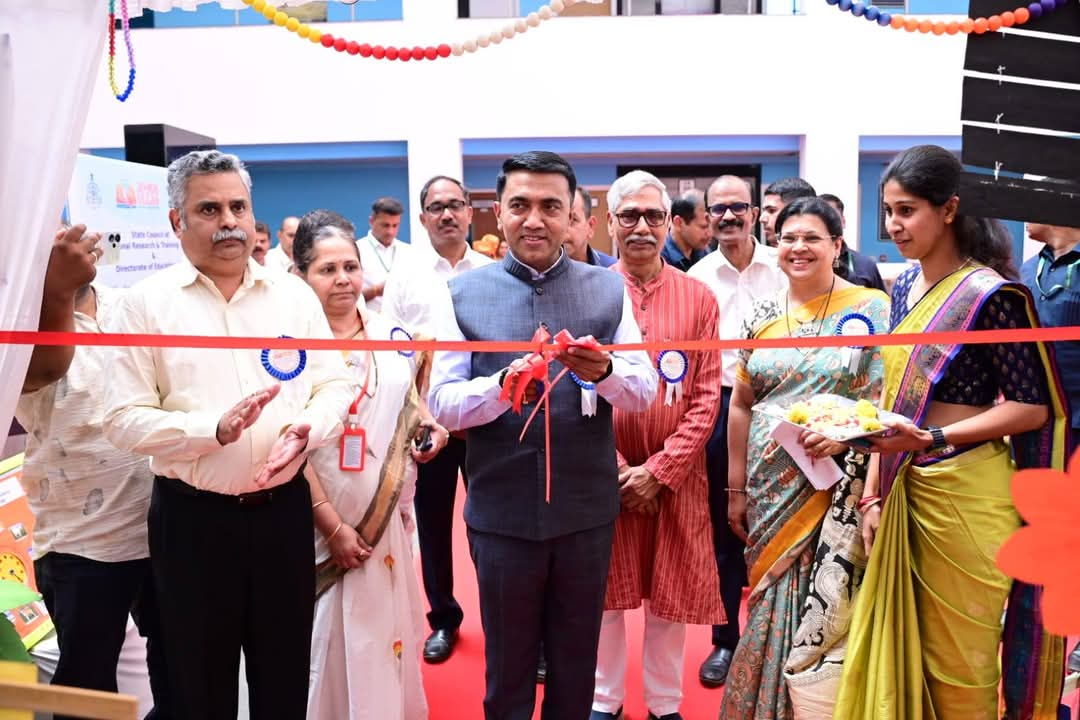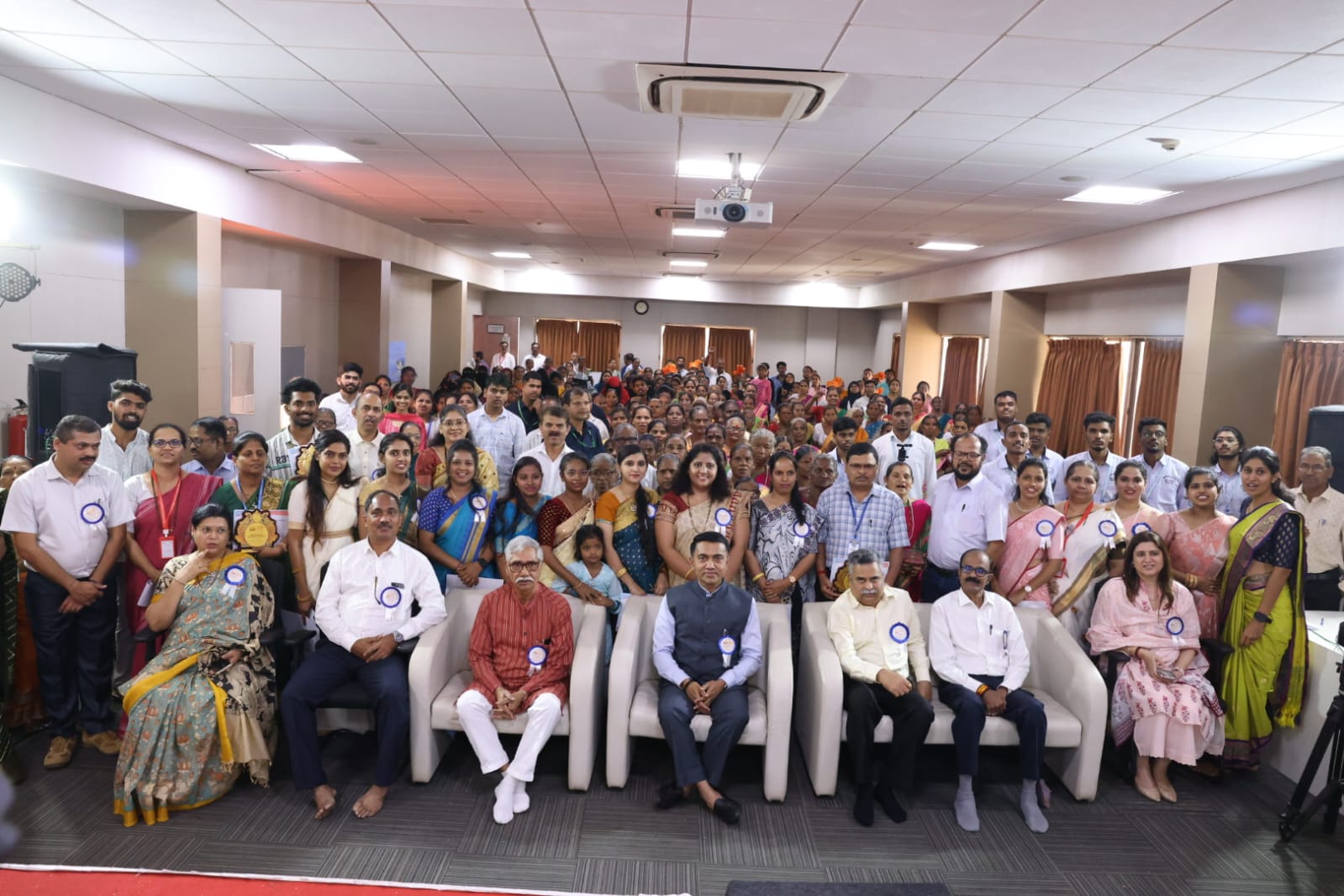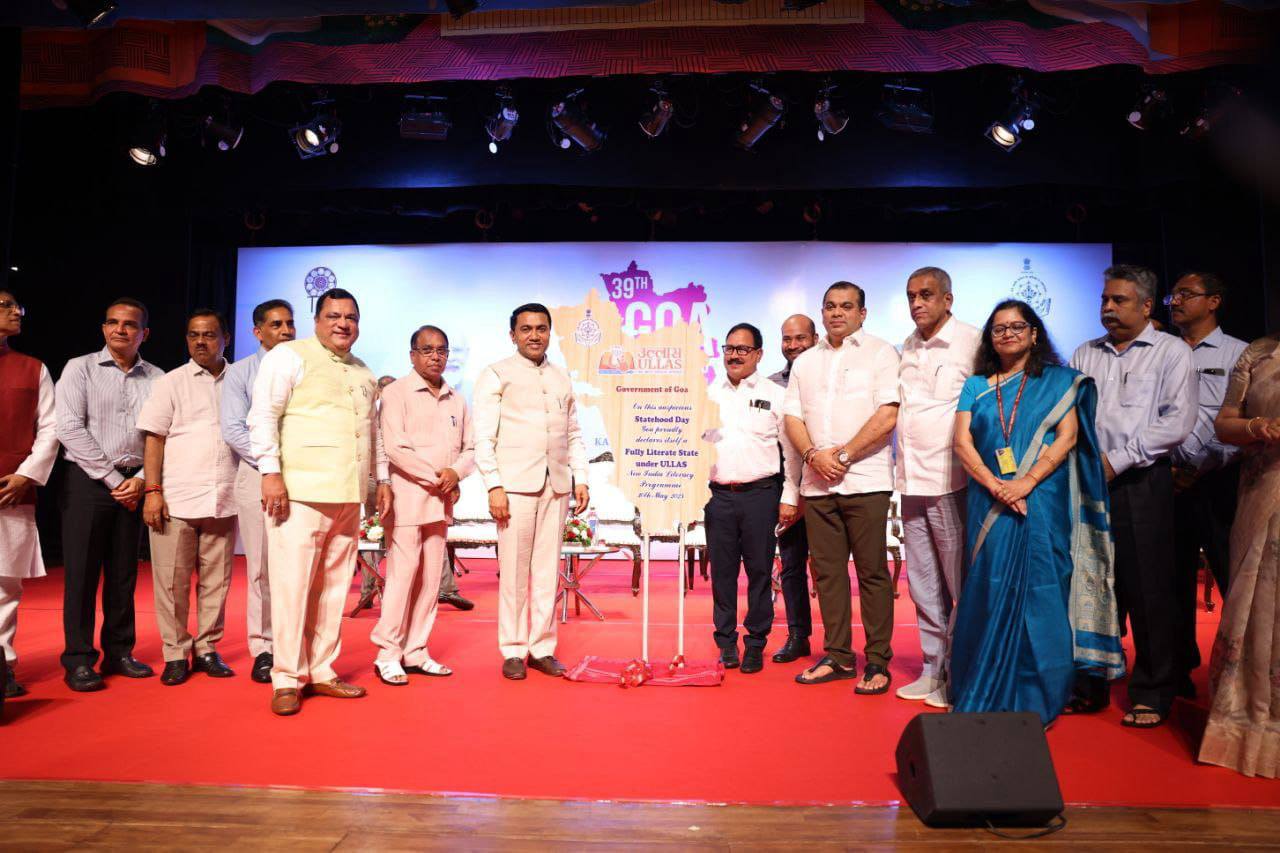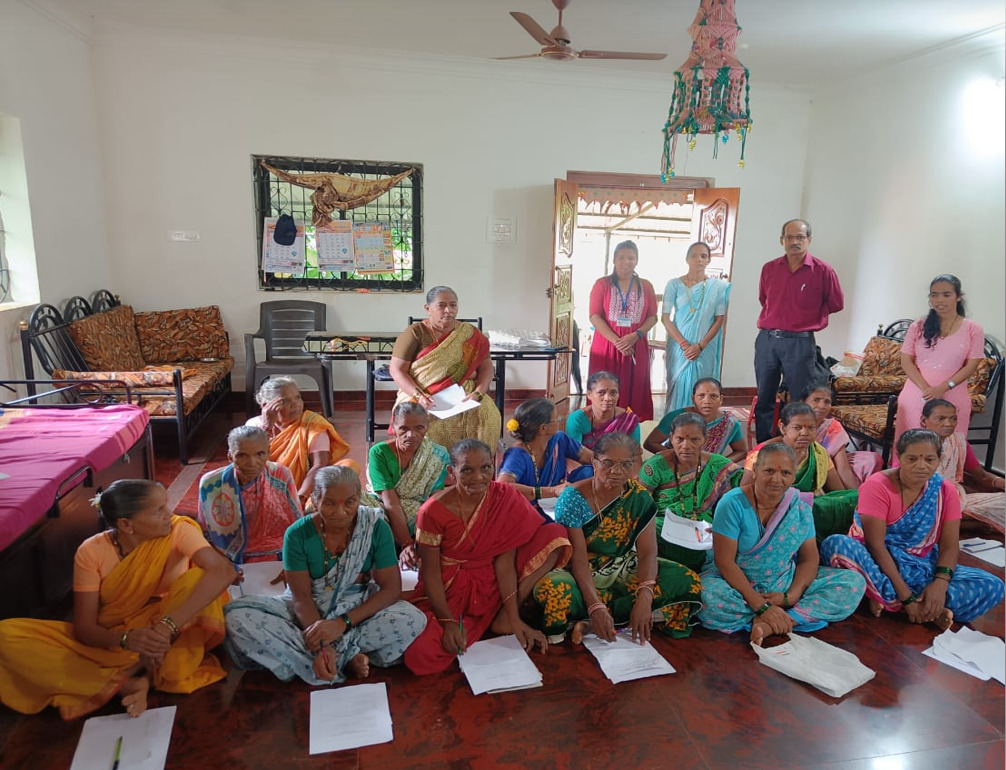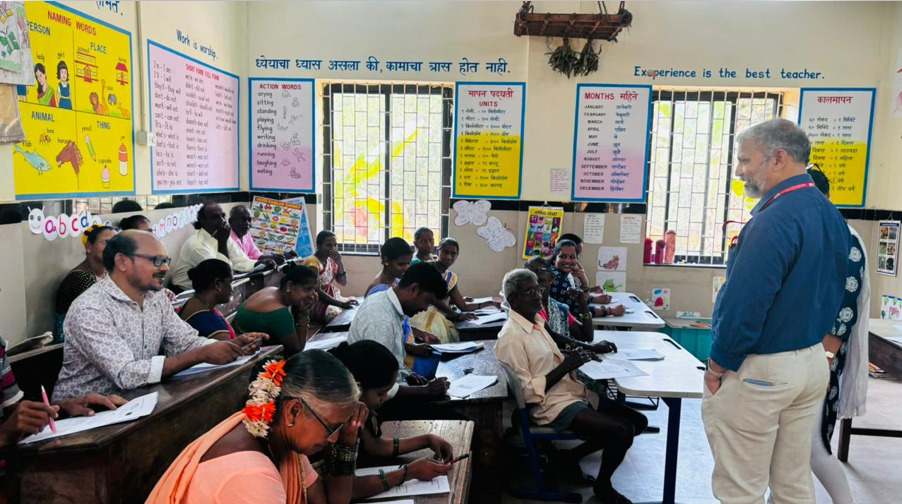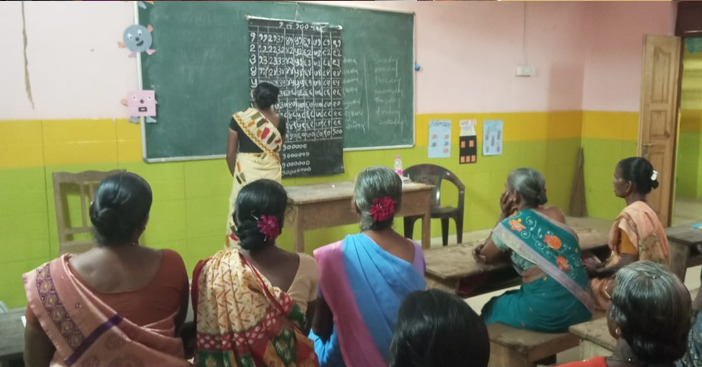New India Literacy Programme – Goa State Council of Educational Research and Training

New India Literacy Programme (NILP) – ULLAS: Nav Bharat Saksharta Karyakram
Problem
- High adult illiteracy, especially among individuals aged 60+, limits civic participation and access to services.
- No existing database to identify illiterate adults, delaying outreach and causing reliance on local bodies for surveys.
- Low awareness and persistent social stigma around adult education programs discourage participation.
- Learners are spread across scattered rural and urban locations, creating logistical difficulties for centralised instruction.
- Heavy dependence on volunteers, with limited long-term institutional structures for sustainable adult learning.
Solution
- Conducted community-based identification of 6,299 non-literate individuals across all 12 talukas of Goa.
- Deployed Resource Adult Trainee Coordinators (RATCs), retired teachers, NSS volunteers, and students to conduct grassroots literacy classes.
- Developed multilingual primers and worksheets (Konkani, Marathi, Hindi, English) covering literacy, numeracy, life skills, and financial education.
- Organised three phases of FLNAT assessments for learner certification, benchmarked to NEP 2020 standards.
- Held statewide awareness events like Literacy Week, rallies, and ULLAS Melas to engage communities and motivate learners.
Outcomes
- Goa declared a Fully Literate State with a 99.72% literacy rate (well above the 95% benchmark) on May 30, 2025.
- 2,136 learners were certified across FLNAT rounds; elderly non-participants remained the majority of dropouts.
- Strengthened community ownership through involvement of panchayats, municipalities, volunteers, and NSS students.
- Improved interdepartmental coordination between Social Welfare, Panchayats, Women & Child Development, and Planning & Statistics.
- Created a replicable national model for adult literacy under NEP 2020, showcasing community-driven learning.
Challenges
- Engaging elderly learners (65% of identified illiterates were above 60), many with health and mobility issues.
- Sustaining learner motivation and retention across multiple assessment phases.
- Recruiting and retaining enough trained volunteers, especially during assessment cycles.
- Developing consistent, high-quality materials in four languages required major effort.
- Managing field-level coordination across 12 talukas, involving multiple departments and stakeholders.
Innovations
- Volunteer-led model combining retired teachers, NSS units, and Swayampurna Mitras to reach scattered learners.
- Decentralised learner identification through community surveys by panchayats and municipal bodies in the absence of baseline data.
- Life-skills integration in primers, linking literacy to health, finance, and civic responsibilities.
- Public engagement campaigns like Literacy Week, Literacy Rally, and ULLAS Mela to reduce stigma and celebrate achievements.
- Plans to digitise monitoring via mobile dashboards and transform ULLAS centres into community knowledge hubs.
SKOCH Award Nominee
Category: State Government – Directorate of Education
Sub-Category: secState Government – Directorate of Education
Project: New India Literacy Programme
Start Date: 6-28-2023
Organisation: Goa State Council of Educational Research and Training
Respondent: Prasad Vithal Lolayekar
https://scert.goa.gov.in/
Level: Premium Star
Video
See Presentation
Gallery
Case Study
New India Literacy Programme (NILP) – ULLAS in Goa
The New India Literacy Programme (NILP), implemented under the banner of ULLAS – Nav Bharat Saksharta Karyakram, stands as a landmark in Goa’s journey toward universal education. Initiated by the Goa State Council of Educational Research and Training (GSCERT) in 2022–23, the programme was designed in alignment with the National Education Policy (NEP) 2020, which emphasises adult education, lifelong learning, and inclusive development. At its core, NILP sought to address the persistent challenge of adult illiteracy, particularly among marginalised groups and elderly citizens, by providing foundational literacy, numeracy, life skills, and civic awareness. On May 30, 2025, the state proudly declared itself a Fully Literate State with 99.72% literacy, surpassing the national benchmark of 95%.
The rationale for implementing NILP in Goa stemmed from the recognition that even in states with relatively high literacy rates, significant sections of the population remained excluded from formal education. Many adults, especially those over 60 years old, had never attended school or had dropped out at an early stage. This limited their ability to engage meaningfully with civic processes, access government services, and adapt to rapidly changing social and economic environments. The absence of a baseline database of non-literate adults compounded the challenge, making it difficult to plan interventions systematically. Addressing these gaps was not just a matter of education but of social justice, empowerment, and inclusivity.
From the outset, Goa adopted a community-driven approach to implementation. Given the lack of centralised data, GSCERT, in collaboration with panchayats, municipalities, and field workers, conducted door-to-door surveys to identify non-literate individuals. The process was supported by NSS student volunteers and Swayampurna Mitras, who played a crucial role in outreach. Through this decentralised model, the state identified 6,299 non-literate adults across its 12 talukas. This grassroots method ensured accuracy and inclusivity, reaching even those in remote and underserved areas.
Once identification was complete, the focus shifted to mobilising human resources for instruction. Resource Adult Trainee Coordinators (RATCs), retired teachers, Block and Cluster Resource Persons, and student teachers were deployed to conduct literacy sessions. Their familiarity with local communities and cultural contexts made them effective mentors and facilitators. Instruction was delivered using specially designed ULLAS primers and worksheets, available in Konkani, Marathi, Hindi, and English. These materials were not limited to basic literacy and numeracy; they integrated practical skills such as financial literacy, health awareness, and civic education. By making learning relevant to daily life, the programme increased both participation and retention.
The assessment framework was another defining feature of NILP in Goa. The state conducted three rounds of Foundational Literacy and Numeracy Assessment Tests (FLNAT) between March and December 2024. These assessments certified learners as literate in accordance with NEP 2020 benchmarks. Out of the 6,299 individuals identified, 2,136 successfully completed certification, while many elderly learners were unable to continue due to health issues or lack of motivation. Despite these constraints, the certification process provided a sense of accomplishment and recognition for adult learners, reinforcing their confidence and participation in community life.
Large-scale awareness campaigns and public engagement initiatives further strengthened the programme. Events such as Literacy Week, a statewide Literacy Rally in Porvorim, and the ULLAS Mela on January 26, 2025, transformed literacy from a private struggle into a public celebration. These activities brought together learners, volunteers, educators, and policymakers, creating a culture of pride around education. They also helped reduce the stigma often associated with adult illiteracy, encouraging wider community participation. By positioning literacy as a collective achievement rather than an individual challenge, Goa succeeded in fostering community ownership of the programme.
The results of these efforts were remarkable. On Goa Statehood Day, May 30, 2025, the state was officially declared Fully Literate, with a literacy rate of 99.72%. This milestone was not just statistical; it represented a profound social transformation. Certified learners gained newfound confidence, enabling them to access government schemes, participate in financial transactions, and engage more actively in civic life. The programme also strengthened the fabric of local governance by enhancing collaboration between multiple departments, including Social Welfare, Women and Child Development, Municipal Administration, and Planning & Statistics. This interdepartmental coordination became a model for effective governance in large-scale educational interventions.
However, the journey was not without challenges. The most significant barrier was the elderly population, which accounted for more than 65% of identified illiterates. Many faced health or mobility issues that hindered regular participation in learning activities. Sustaining learner motivation over multiple phases of training and assessments also required consistent efforts by volunteers. Another challenge lay in the heavy reliance on volunteers, particularly retired teachers and NSS students, which raised questions about long-term sustainability. The development of learning materials across four languages demanded significant resources, while coordinating activities across 191 panchayats and 13 municipalities required extensive monitoring and follow-up.
Despite these hurdles, the programme introduced several innovations that contributed to its success. The volunteer-driven model reduced costs while promoting community ownership. The decentralised identification of learners through local governance bodies ensured inclusivity in the absence of baseline data. By integrating life skills into literacy materials, the programme ensured that education was practical and immediately useful to learners. Public events like the ULLAS Mela not only celebrate achievements but also create positive reinforcement for learners and their families. Looking ahead, Goa plans to build on these innovations by integrating digital dashboards for real-time monitoring and transforming ULLAS centres into community knowledge hubs that provide lifelong learning opportunities.
The Goa experience offers several important lessons for other states. It demonstrates that community ownership is central to success, as local governance bodies and volunteers were instrumental in both identification and implementation. It also highlights the need for sensitivity and flexibility when working with elderly learners, many of whom require special support. While volunteerism proved highly effective, the programme underscored the importance of institutionalising support structures to ensure sustainability. Furthermore, public celebrations of learning helped shift societal attitudes toward literacy, turning it into a source of pride rather than stigma. Finally, the development of multilingual, contextual learning materials was critical in improving learner engagement and outcomes.
As Goa moves forward, the focus will shift from achieving literacy to sustaining and expanding it. The state intends to integrate adult education with digital literacy and vocational skills, enabling citizens to participate more effectively in the modern economy. Plans are underway to document Goa’s implementation as a replicable case study for other states, ensuring that the lessons learned are shared widely. Additionally, Panchayat-level centres are expected to evolve into community knowledge hubs, offering continuous education and skilling opportunities. Neo-literates may also be engaged as peer educators, creating a cycle of empowerment and continuity.
In conclusion, from identifying 6,299 non-literate individuals to celebrating over 2,000 certified learners, the state overcame barriers of age, health, and stigma to achieve full literacy. More than just an educational initiative, NILP in Goa became a movement of empowerment and inclusion, redefining literacy as a foundation for dignity, participation, and nation-building.
For more information, please contact:
Prasad Vithal Lolayekar at prasadlolayekar@gmail.com
(The content on the page is provided by the Exhibitor)

